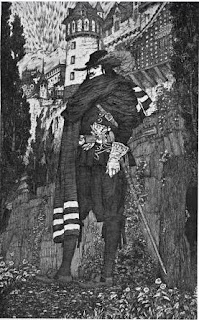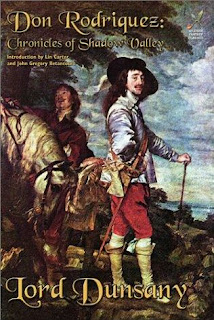 The Story of Lottie Deno: Her Life and Times
The Story of Lottie Deno: Her Life and Times, by J. Marvin Hunter
This book was the last biographical work of J. Marvin Hunter, an amateur historian who wrote and published magazines, pamphlets and books about the history of Texas. He had met Lottie Deno when she lived in New Mexico in 1901 under the name Charlotte Thurmond.
This work is made up of many short pieces that together tell the story of Lottie Deno, her 4 years as a gambler at Fort Griffin Texas in the 1870s, and her later life in New Mexico. By using short sketches to build the story, Hunter quotes many points of view and the focus is not only on Lottie, but also on the history of Fort Griffin and Deming, New Mexico.
During the 1870s Fort Griffin on the Brazos River was the US Army's outpost in their war with the Comanche and Kiowa people, a center for the slaughter of the buffalo, and a stop on the Dodge City Cattle Trail. These activities brought a lot of men with money to spend who were looking for a good time to the town outside the fort. That attracted people like Wyatt Earp, Doc Holliday, John Wesley Hardin, Billy the Kid, Sheriff Pat Garrett and Bat Masterson to what Mr. Hunter calls The Wickedest Town on the Frontier. It also attracted a woman gambler who called herself Lottie Deno.
The author does a good job of gathering together a lot of the published materials about Lottie and Fort Griffin that appeared in magazines and books and making it available again in one place. As a result the book jumps around and repeats itself, mixes facts and legends, and is as much about Lottie's times as it is about her life.
The first chapter is his own telling of her early life in a rich family in Kentucky where her father was a prominent citizen farmer with a love of card playing. Having only daughters, he shares his love of cards with his oldest daughter Charlotte. After his death, she takes up gambling on the Mississippi river boats and New Orleans as a way to support her mother and sister, moves on to San Antonio to gamble, and then is drawn to the fast and easy money of Fort Griffin. To protect her family from scandal she takes on the name of Lottie Deno, which was a short form of the slang term "Lotta Dinaro" - Lots of Money.
The second chapter is a re-publication of a description of "Old Fort Griffin" by Don H. Biggers that appeared in his 1908
Shackleford County Sketches. Biggers focuses a lot on the lawlessness of the town. While it was an Army base, the Army's job was war with the native Americans and not civil law, so the town that sprang up outside the fort was not their jurisdiction or concern. He paints a lawless town where over 50 people were killed in a dozen years with little or no legal proceedings.
Chapter III tells the story of Lottie's arrival at Fort Grffin with a long quote from Edgar Rye's 1909 book
The Quirt and the Spur. Mr. Rye calls her "a female monstrosity" and relates a story where she stayed calmly at the card table as everyone else in the room fled as two players argued and shot each other. When the sheriff sees her calmly counting her chips near the carnage, he says she has a lot of nerve and that he wouldn't have "cared to take his chances in that scrimmage." Her reply is "Perhaps not, sheriff, but you are not a desperate woman."
The next two chapters are from the point of view of John Jacobs, one of the sheriffs of Griffin, and an acquaintance of the author in the 1920s. These are followed by a chapter that quotes from Alfred Henry Lewis's 1902 novel
Wolfville Nights in which his character Faro Nell is modelled after Lottie. More chapters then tell the story of Fort Griffin from and some of the men who lived and died there. Basically, after the buffalo are slaughtered, the Cherokee and Kiowa are starved onto reservations, the fort closes, the town dies, and everyone leaves. It is a story of its own that deserves telling in more detail.
In Chapter XI Lottie's life picks up again in Deming, New Mexico where the author was a reporter for the local newspaper in 1900 and she is married to a rancher named Frank Thurmond. She is a founding member of the town's Golden Gossip Club, and an upright member of the community. There are only rumors that she may have been Lottie Deno.
Little is told of the saloon and gambling room Lottie and Frank ran in New Mexico after they left Texas. Frank killed a man in self defense, and they decided to give up gambling and move to Deming. Much of the end of the book is devoted to turn of the century Deming life.
One of the strengths of this book is the early sketches of Lottie's life and Fort Griffin that Mr. Hunter is able to bring together in one place. He knew Texas history well and was able to piece together a lot of different sources. However, this approach makes the book fragmented, episodic and dated. Hopefully, a new book by Jan Devereaux,
Pistols, Petticoats & Poker: The Real Lottie Deno: No Lies or Alibis, published by High Lonesome Books, will provide a more cohesive in-depth look at this woman that many claim was the model for the beautiful, redheaded Miss Kitty who ran the Longbranch Saloon in the famous "Gunsmoke" television series.















